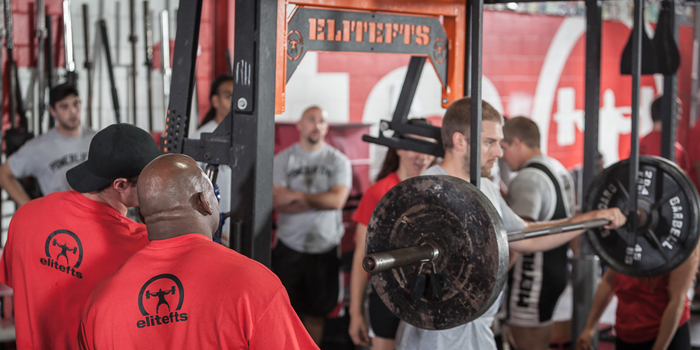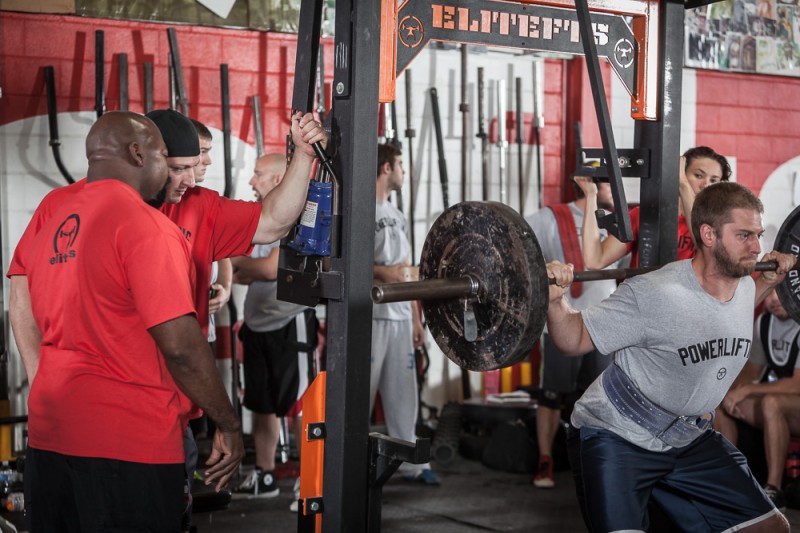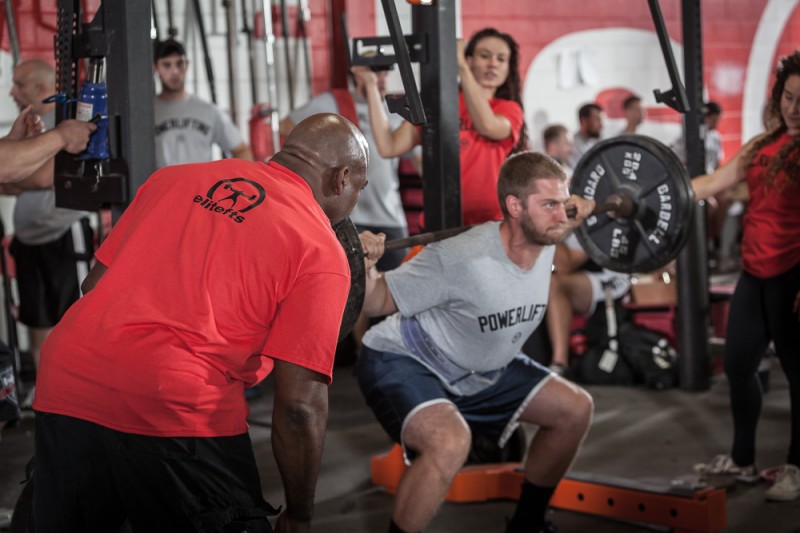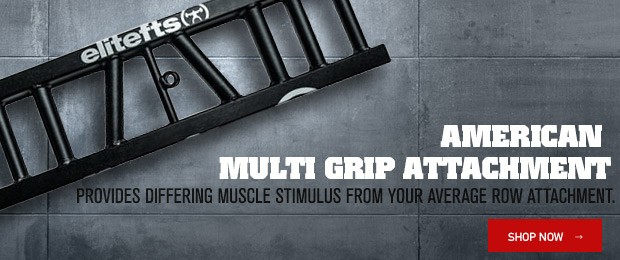
While there are many good beginner strength programs, most of them suffer from four key omissions that make them incomplete for a lot of beginner lifters. These include:
- Failure to include/teach warm-ups
- Inappropriate progressions
- Failure to accommodate for common technique problems
- Not addressing common muscular and postural imbalances (specifically in the mid back and glutes)
Let’s look at each of these errors individually.
Failure to Include Warm-Ups
I get it, warming up is boring! It’s also, unfortunately, important — especially as a lifter progresses into the later stages of their lifting career.
Many beginners are young enough and not lifting heavy enough (yet) that they can get away without warming up, but why not build good habits early? We want the best possible foundation for long-term success, right?
One of the biggest issues we routinely see for older lifters is a lack of mobility. Often these lifters could get by just fine when they started, but now have to spend copious amounts of time and energy trying to get it back. If they had just done some regular maintenance work from day one, this could usually have been avoided.
It’s an easy solution to teach lifters to get into the habit of spending 5-10 minutes at the start of each session addressing any issues. Despite this, almost no programs do this. They just prescribe sets and reps.
RELATED: Non Linear Periodization for Beginners
Similarly, the same logic applies to weight progressions. Many programs don’t instruct lifters to perform one warm-up sets with the empty bar on the way to their top weights to loosen-up, test how their body feels that day, and practice technique points. Some lifters will figure out how to warm-up on their own, but not all of them do. It’s not as intuitive to a new lifter as it might seem to a seasoned veteran of the iron game.
Inappropriate Progressions
Most of the time the prescription goes something like this: add five pounds on upper body lifts and 10 pounds on lower body lifts every workout. Repeat until you fail. Okay, sounds great so far, right?
And for many lifters it is. If you’re a young guy of average weight this will probably work very well for you. You have the mass and potential to add 10 pounds to your squat and deadlift and five pounds to your bench and press every workout and keep going for a long time – especially if you don’t start super heavy to begin with.
If the lifter in question is older, lighter, or a female, maybe that progression isn’t so realistic. A 110 pounds female lifter, in her 30s or 40s, with a max shoulder press of 50 pounds probably can’t just “add five pounds a workout”, five pounds represents a 10% increase, every workout! That’s like telling a guy with a 300 pound squat to add 30 pounds to his lift every training day.
That’s not going to be sustainable.
She might need to get fractional plates in order to make smaller increases, or stay at the same weight for multiple workouts and increase only every 1-2 weeks instead of every session. There are a number of ways to slow down the rate of progression to make it realistic for everyone, but most programs don’t address this.
Not Accommodating for Common Technical Errors
Barbell movements like deadlifts and bench presses are hugely beneficial when performed correctly, and while they’re not overly complicated movements, they’re still difficult to truly master.
That shouldn’t be underestimated.
Lifters who have been performing these movements for years are still learning and improving their technique. So, what are the chances of a beginner doing a squat for the first time getting it 100% right? If you answered zero, you’re correct.
While no two lifters are the same, there are common mistakes that are prevalent with most new lifters (for example: tipping forward in the squat or lack of control on the bench press descent).
Obviously the best case scenario would be to have an experienced coach work with the lifter and give personalized technique corrections and special drills as needed.
MORE: Beginner Mistakes - Part I: Max Effort Progression
However, that’s not a reality for most lifters. Instead, there are variations of the lifts that can be used to address these issues and speed up the learning curve towards mastering the technique (pause above parallel squats or tempo bench press for example).
Addressing these issues early is SO IMPORTANT.
It lets new lifters develop good motor patterns from day one, instead of being forced to relearn them later down the road.
If left unchecked, these technique limitations will eventually expose the lifter to injury or at the very least a premature plateau in performance that is totally, 100% avoidable.
If you think you’re a 400-pound squatter, no one wants to hear that they need to dial it back to 250 to work on improving their technique. That sucks, no matter how necessary you and your coach know it is. Fixing it from day one is a thousand times better.
Occasionally, a program will include a “light” day. The stated purpose of a light day is usually to allow for recovery, but to still provide a little volume and workload for the athlete. The other benefit of a light day, to provide an opportunity to perfect technique with lighter weights, is rarely mentioned.
A light day is a useful inclusion for many lifters, but the purpose of these days needs to be explicitly stated. When it’s labelled a light day, the connotation is that it’s not important and can be taken less seriously. New lifters are likely to be sloppy and lose the real benefit.
Instead, we prefer calling it a “technique-focused day,” and explaining that the goal is building perfect movement patterns. This automatically creates a very specific goal for the workout, focuses the lifter on the real task, and helps them reap the full benefit.
Not Address Common Muscular and Postural Imbalances
Almost everyone in today’s society has a few common postural issues and muscular imbalances.
For example, one of the most common ones is a weak and inactive middle back (the rhomboids, infraspinatus and teres are underdeveloped). This this leads to two major movement dysfunctions.
One is “hiking the shoulders,” where the upper traps engage strongly when doing just about any upper body movement, causing the shoulders to elevate instead of staying centred in the joint.
The second is internal rotation of the shoulders (having the shoulders roll forward during pressing movements) instead of keeping them centred in the joint (if we were doing a chin-up, for example), or actually retracting shoulder blades aggressively (as we’d do in a proper bench press).
Not only does this lead to poor posture, but these inefficiencies limit the effectiveness of most upper body movements and increase the risk of shoulder injuries when pressing.
While it’s not guarantee that a new lifter will suffer from these issues, years of experience tells us that a majority will. Addressing this early with remedial shoulder exercises band pull-aparts, face pulls, and back flies with cables is an easy solution that should be present in a good beginner program.
In the same vein, single limb work (especially single leg work) is almost always overlooked in beginner programs despite the fact that most new lifters have significant balance and motor control issues when doing anything unilateral. They often have pronounced strength imbalances from one side to the other also.
MORE: 4 Things Your Body Needs to Stay Symmetrical
Step-up and lunge variations, Bulgarian split squats, and simple prehab movements like Poliquin step-ups are a beneficial addition to most beginner programs to help correct this.
We’re not advocating for single leg work to replace major compound movements like squats and deadlifts, but they should be included as a supplement to balance the program.
Since we already know that the vast majority of people will be limited by predictable weaknesses, and that they’ll get a huge benefit from these extra, targeted exercises to correct them, why not add them to a program that’s designed for a wide audience?
Yet, we don’t see anything like a reverse cable fly in popular, basic strength programs like Starting Strength or 5/3/1.
Conclusion
If you’re looking for a beginner routine, find one that doesn’t suffer from these typical pitfalls: not teaching warm-ups, inappropriate progressions, and failure to account for common technique issues and muscular imbalances.
Your best option is to find an experienced coach to design an individualized program to address your specific needs.
If you’re looking for a generic program, we suggest our Quantum Learn to Lift Program as an excellent place to start (and it’s free), but any program that checks these boxes is A-OK.
Alastair has a BA in Health Studies from Queens University and has competed in a variety of sports including track, rugby and cheerleading. He's coached at Quantum CrossFit since 2011, where he shares his love for strength and fitness. He also runs the Quantum Powerlifting Program. If you want to get functionally strong, work with Alastair. He is one of the most technical and knowledgeable lifters in Canada. He is currently an elite powerlifter in the uber-competitive 220 pound class. As of this posting he holds the Canadian deadlift record at 760 pounds as well as best lifts of 645 in the squat, 410 in the bench press, and an 1802 total. He has competed in and medaled at some of the most prestigious international competitions including the WPC World Championships and Raw Unity.












Starting Strength is the best beginner program based on the incredibly detailed book about technique and progression. If the movements are correctly taught as per the book, what you raise is moot.
5/3/1 is one of the best intermediate programs in existence, together with the Texas Method which follows on from Starting Strength.
Both programs have been developed over many years by extraordinarily experienced strength coaches with reams of empirical evidence. Anyone would be hard pressed to say the same for Quantum. A statistical representation of one is pretty much a null sample.
Disappointed.